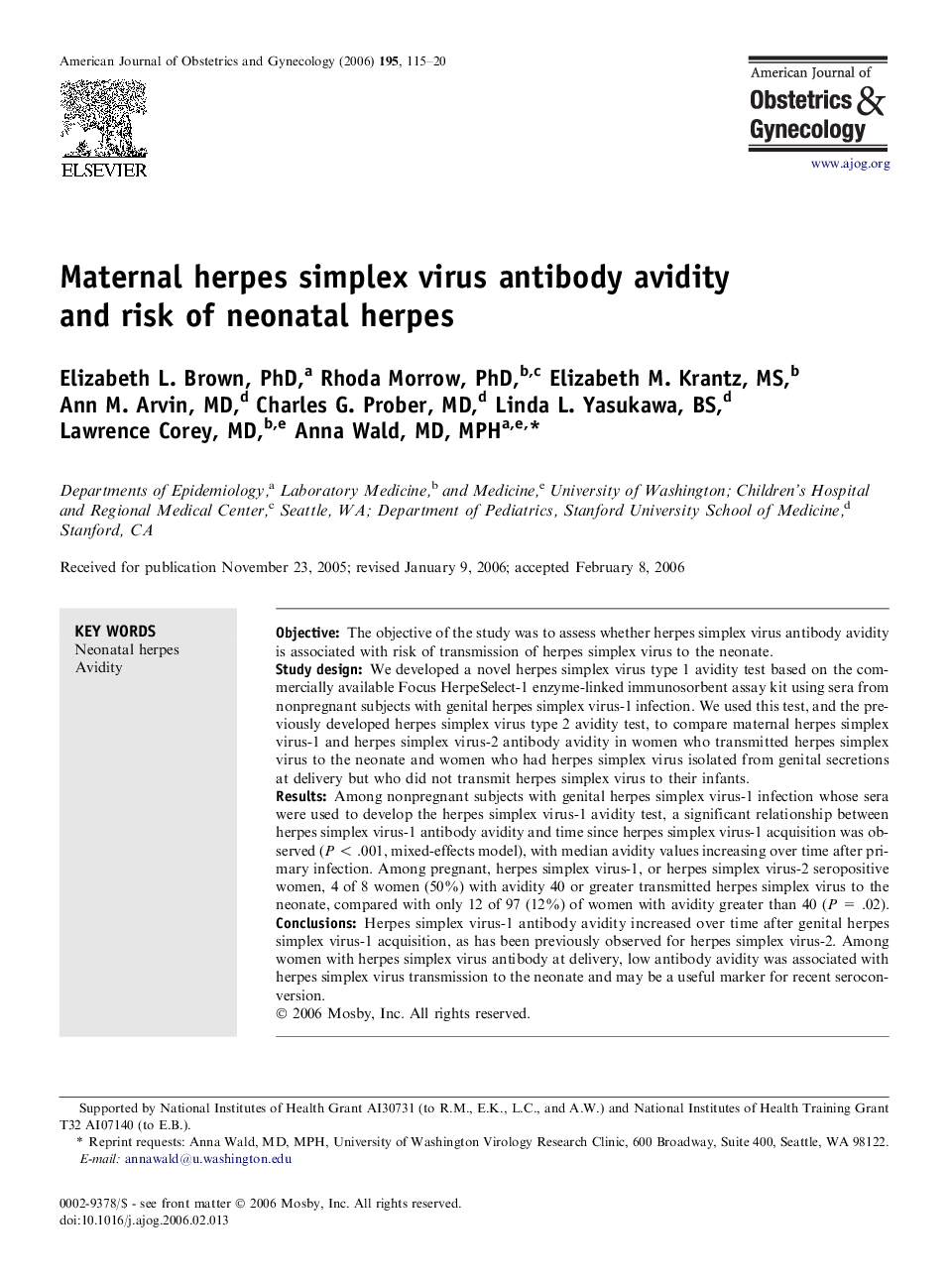| Article ID | Journal | Published Year | Pages | File Type |
|---|---|---|---|---|
| 3441262 | American Journal of Obstetrics and Gynecology | 2006 | 6 Pages |
ObjectiveThe objective of the study was to assess whether herpes simplex virus antibody avidity is associated with risk of transmission of herpes simplex virus to the neonate.Study designWe developed a novel herpes simplex virus type 1 avidity test based on the commercially available Focus HerpeSelect-1 enzyme-linked immunosorbent assay kit using sera from nonpregnant subjects with genital herpes simplex virus-1 infection. We used this test, and the previously developed herpes simplex virus type 2 avidity test, to compare maternal herpes simplex virus-1 and herpes simplex virus-2 antibody avidity in women who transmitted herpes simplex virus to the neonate and women who had herpes simplex virus isolated from genital secretions at delivery but who did not transmit herpes simplex virus to their infants.ResultsAmong nonpregnant subjects with genital herpes simplex virus-1 infection whose sera were used to develop the herpes simplex virus-1 avidity test, a significant relationship between herpes simplex virus-1 antibody avidity and time since herpes simplex virus-1 acquisition was observed (P < .001, mixed-effects model), with median avidity values increasing over time after primary infection. Among pregnant, herpes simplex virus-1, or herpes simplex virus-2 seropositive women, 4 of 8 women (50%) with avidity 40 or greater transmitted herpes simplex virus to the neonate, compared with only 12 of 97 (12%) of women with avidity greater than 40 (P = .02).ConclusionsHerpes simplex virus-1 antibody avidity increased over time after genital herpes simplex virus-1 acquisition, as has been previously observed for herpes simplex virus-2. Among women with herpes simplex virus antibody at delivery, low antibody avidity was associated with herpes simplex virus transmission to the neonate and may be a useful marker for recent seroconversion.
